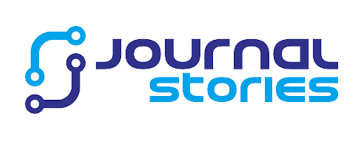OPTIMIZING PRISONERS' RISK AND NEEDS ASSESSMENT IN PEMATANG SIANTAR CLASS IIA REHABILITATION
DOI:
https://doi.org/10.61397/ays.v2i2.59Keywords:
Risk and needs assessment, coaching, optimizationAbstract
Independence coaching is a form of program implemented by providing work guidance training which is an effort to provide provisions and skills to correctional prisoners while they are serving their sentences which are useful when the prisoners return to the midst of society in providing such guidance, an assessment is carried out where the assessment activities carried out on correctional prisoners aim to collect data and information on correctional prisoners which are then verified and analysed to provide an assessment of the risks and needs of correctional prisoners, its implementation refers to the Minister of Law and Human Rights Regulation number 12 of 2013 concerning risk assessment and assessment of the needs of prisoners, The method used in this research is descriptive method to analyse a research with a case study as a series of activities in obtaining data by presenting the actual situation and explaining the circumstances and conditions of the problem, Optimisation of risk assessment and needs assessment in the independence coaching program at the Pematang Siantar class IIA correctional institution is currently not optimal where its implementation should refer to the Minister of Law and Human Rights Regulation number 12 of 2013 concerning risk assessment and needs assessment of prisoners, this is because in the implementation of risk assessment and needs assessment itself in the Pematang Siantar class IIA correctional institution there are obstacles accompanied by various factors.
Downloads
References
Akiyama, M. J., Kronfli, N., Cabezas, J., Sheehan, Y., Thurairajah, P. H., Lines, R., & Lloyd, A. R. (2021). Hepatitis C elimination among people incarcerated in prisons: Challenges and recommendations for action within a health systems framework. The Lancet Gastroenterology & Hepatology, 6(5), 391–400. https://doi.org/10.1016/S2468-1253(20)30365-4
Alves da Costa, F., Verschuuren, M., Andersen, Y., Stürup-Toft, S., Lopez-Acuña, D., & Ferreira-Borges, C. (2022). The WHO Prison Health Framework: A framework for assessment of prison health system performance. European Journal of Public Health, 32(4), 565–570. https://doi.org/10.1093/eurpub/ckac020
Blair, A., Parnia, A., & Siddiqi, A. (2021). A time-series analysis of testing and COVID-19 outbreaks in Canadian federal prisons to inform prevention and surveillance efforts. Canada Communicable Disease Report, 47(1), 66–76. https://doi.org/10.14745/ccdr.v47i01a10
Fuge, T. G., Tsourtos, G., & Miller, E. R. (2022). Factors affecting optimal adherence to antiretroviral therapy and viral suppression amongst HIV-infected prisoners in South Ethiopia: A comparative cross-sectional study. AIDS Research and Therapy, 19(1), 5. https://doi.org/10.1186/s12981-022-00429-4
Ghasemi, M., Anvari, D., Atapour, M., Stephen wormith, J., Stockdale, K. C., & Spiteri, R. J. (2021). The Application of Machine Learning to a General Risk–Need Assessment Instrument in the Prediction of Criminal Recidivism. Criminal Justice and Behavior, 48(4), 518–538. https://doi.org/10.1177/0093854820969753
Hamilton, Z., Duwe, G., Kigerl, A., Gwinn, J., Langan, N., & Dollar, C. (2022). Tailoring to a Mandate: The Development and Validation of the Prisoner Assessment Tool Targeting Estimated Risk and Needs (PATTERN). Justice Quarterly, 39(6), 1129–1155. https://doi.org/10.1080/07418825.2021.1906930
Hamilton, Z., Kigerl, A., & Kowalski, M. (2022). Prediction is Local: The Benefits of Risk Assessment Optimization. Justice Quarterly, 39(4), 722–744. https://doi.org/10.1080/07418825.2021.1894215
Jaya, I. M. L. M. (2020). Metode Penelitian Kuantitatif dan Kualitatif: Teori, Penerapan, dan Riset Nyata. Anak Hebat Indonesia.
Kothari, R., Forrester, A., Greenberg, N., Sarkissian, N., & Tracy, D. K. (2020). COVID-19 and prisons: Providing mental health care for people in prison, minimising moral injury and psychological distress in mental health staff. Medicine, Science and the Law, 60(3), 165–168. https://doi.org/10.1177/0025802420929799
MacLean, A., Maycock, M., Hunt, K., Mailer, C., Mason, K., & Gray, C. M. (2022). Fit for LIFE: The development and optimization of an intervention delivered through prison gymnasia to support incarcerated men in making positive lifestyle changes. BMC Public Health, 22(1), 783. https://doi.org/10.1186/s12889-022-13004-3
Macmadu, A., Adams, J. W., Bessey, S. E., Brinkley-Rubinstein, L., Martin, R. A., Clarke, J. G., Green, T. C., Rich, J. D., & Marshall, B. D. L. (2021). Optimizing the impact of medications for opioid use disorder at release from prison and jail settings: A microsimulation modeling study. International Journal of Drug Policy, 91, 102841. https://doi.org/10.1016/j.drugpo.2020.102841
Ryland, H., Gould, C., McGeorge, T., Hawton, K., & Fazel, S. (2020). Predicting self-harm in prisoners: Risk factors and a prognostic model in a cohort of 542 prison entrants. European Psychiatry, 63(1), e42. https://doi.org/10.1192/j.eurpsy.2020.40
Sheehan, Y., Cunningham, E. B., Cochrane, A., Byrne, M., Brown, T., McGrath, C., Lafferty, L., Tedla, N., Dore, G. J., Lloyd, A. R., & Grebely, J. (2023). A ‘one-stop-shop’ point-of-care hepatitis C RNA testing intervention to enhance treatment uptake in a reception prison: The PIVOT study. Journal of Hepatology, 79(3), 635–644. https://doi.org/10.1016/j.jhep.2023.04.019
Shih, S. T. F., Cheng, Q., Carson, J., Valerio, H., Sheehan, Y., Gray, R. T., Cunningham, E. B., Kwon, J. A., Lloyd, A. R., Dore, G. J., Wiseman, V., & Grebely, J. (2023). Optimizing point-of-care testing strategies for diagnosis and treatment of hepatitis C virus infection in Australia: A model-based cost-effectiveness analysis. The Lancet Regional Health – Western Pacific, 36. https://doi.org/10.1016/j.lanwpc.2023.100750
Downloads
Published
How to Cite
Issue
Section
License
Copyright (c) 2025 Binsar Parulian Rajagukguk; Muhammad Ali Equatora, Ali Muhammad

This work is licensed under a Creative Commons Attribution-NonCommercial-ShareAlike 4.0 International License.








